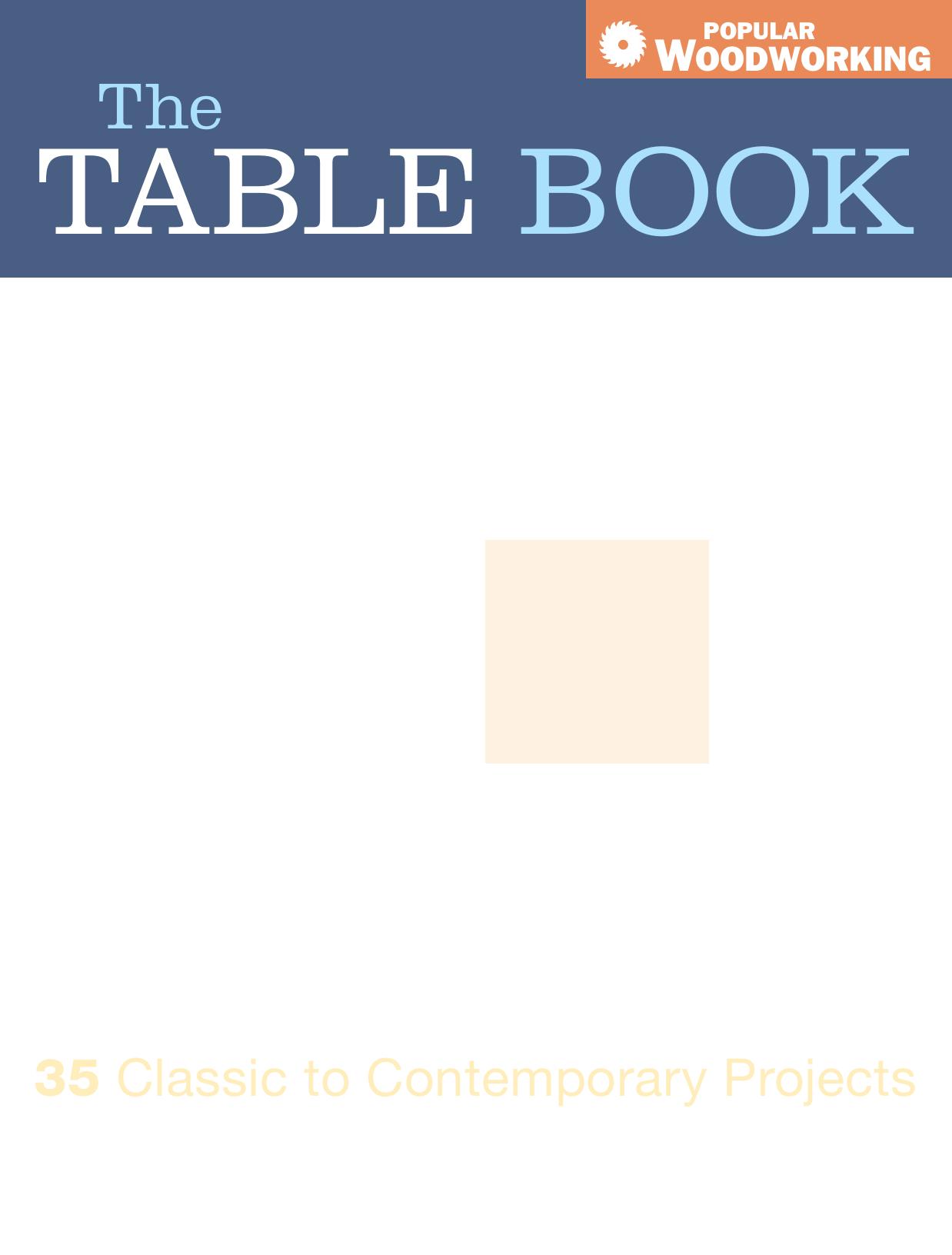The Table Book by Editors of Popular Woodworking

Author:Editors of Popular Woodworking
Language: eng
Format: epub, pdf
Tags: epub, ebook
Publisher: F+W Media, Inc.
Published: 2010-08-27T16:00:00+00:00
PROJECT 19
Butler Tray Table
Nothing says “classy” like bringing out a full tea service on a tray table. This tray table lifts off its base. Butler not included.
BY JIM STUARD
When we set out to build a tray table, we thought we'd come across plenty of examples in the historical record. Truth be told, there weren't many. This form probably originated about 100 years ago, in the Victorian era. A time when showing all of the trappings of wealth included having the butler bring out the good tea service for afternoon tea. Having the head servant emerge with everything in its place and setting it on the table base would appear most impressive.
Ellipses and Squares
The top is a rectangle set inside of an ellipse. The wings touch at the four corners of the rectangle.
Begin by cutting out all the parts according to the cutting list. Next, cut the wings to shape as shown in the illustrations and photos. Then put the wing parts in place against the rectangle and, using masking tape, attach the wings to the top so they pull up tight.
Mounting the Wings
Mark the hinge locations 4″ in from each corner and transfer the location to each wing with a knife. The barrels of the hinges don't align exactly with the wing joint, so use the template in the illustrations to locate the hinge recesses. Rout the recesses on the table side first; then, with a spacer, rout the wing side. There is some chisel work involved in fitting the hinge's spring mechanism to the top and wings. After this is done, attach all of the wings and test the fit.
You will notice that after mounting the wings, all four can't fold up at the same time. Routing a roundover profile on the edges of the top and wings will fix this. Rout a 3/8″ profile on the top and a ¼″ profile on the bottom. After this is done, remove the wings. Use a scroll saw or jigsaw to cut the handle holes using the pattern, sand and rout with a ¼″ radius. Finish sand the top and wings and then set them aside for finishing.
The Pierced Stretcher
The stretcher on this table is strictly for show, and the turned ball centerpiece discourages people from putting anything on the stretcher, including their feet. Rough-cut the stretchers to size, then use the pattern to lay out the angled half-lap joints on the pieces. I cut the half laps with a hand saw and a rabbet plane, but a straight edge and a router would work fine. After cutting the half laps, temporarily attach the stretcher pieces together with a screw.
Download
The Table Book by Editors of Popular Woodworking.pdf
This site does not store any files on its server. We only index and link to content provided by other sites. Please contact the content providers to delete copyright contents if any and email us, we'll remove relevant links or contents immediately.
On Writing A Memoir of the Craft by Stephen King(4216)
The Doodle Revolution by Sunni Brown(4044)
A Simplified Life by Emily Ley(3573)
Mummy Knew by Lisa James(3169)
Marijuana Grower's Handbook by Ed Rosenthal(3120)
Paper Parties by Erin Hung(3041)
Better Homes and Gardens New Cookbook by Better Homes & Gardens(2955)
Figure Drawing for Artists by Steve Huston(2799)
Draw Your Day by Samantha Dion Baker(2708)
The Genius of Japanese Carpentry by Azby Brown(2610)
Japanese Design by Patricia J. Graham(2556)
Lions and Lace by Meagan Mckinney(2495)
Dangerous Girls by Haas Abigail(2472)
The Curated Closet by Anuschka Rees(2385)
Zero to Make by David Lang(2348)
How to Make Your Own Soap by Sally Hornsey(2340)
The Wardrobe Wakeup by Lois Joy Johnson(2235)
The Code Book by Simon Singh(2210)
The Checklist Manifesto by Atul Gawande(2204)
